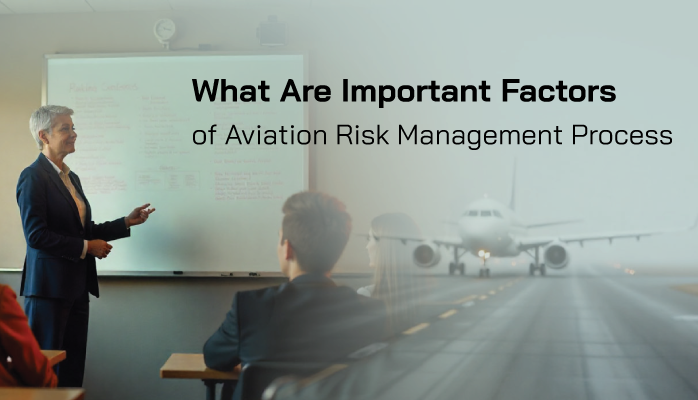Aviation Risk Management Process Based on Reality

The aviation industry is one where the stakes are always high because human life is involved and the "aviation system" is an open system that is impossible to totally control.
Many have sacrificed their lives for the thrill of flight. Over the years, aviation risk management has emerged to prevent unnecessary loss of life and property.
Risk management processes are only effective when
- there is a pilot with a mentality worthy of it,
- the understanding of risk vs. benefit, and
- a firm grasp on reality.
Every great pilot has a solid mentality at the core, or so we like to believe. There is potential peril every time the aircraft leaves the ground, but there is also potential for great gain—a successful risk manager must be able to identify which will win in the end and must be firmly in touch with reality.
Related Aviation Risk Management Articles
- Difference Between Reactive, Predictive and Proactive Risk Management in Aviation SMS
- What Is the Process of Risk Management in Aviation SMS
- 4 Elements of Safety Risk Management (SRM)
Success Depends on Proper Risk Management Mindset
Aviation is a field where the proper risk management mindset plays a huge role in being successful. This industry involves a very large amount of
- stress,
- risk, and
- dangers.
Being able to cope with the potential impact of our decisions takes a calm and level-headed mental state. Like many other things, the right outlook is 90% of the battle. A level head can take a pilot much further than blind boldness. Of course, training and a solid understanding of hazards and their associated risk are very important.
Aviation Activity Risk Always Remains

In aviation, there will always be some element of risk. Risk management processes exist because risk and aviation will always go hand-in-hand.
To be successful in managing risk, you must
- receive sufficient hazard identification and safety reporting processes;
- be motivated to practice proper hazard identification techniques; and
- ensure adequate risk assessment and mitigation strategies don't allow risk scenarios to affect operations.
For example, flying an aircraft for the first time in poor weather is not a necessary risk.
Some benefits outweigh the potential dangers, such as taking a test flight on a sunny day surrounded by many potential emergency landing spots. There are a lot of models that help in the management process, including:
- IM SAFE,
- PAVE, and the
- 5 P’s.
These are just a few risk management models that assist in decision-making processes, there are others, but all have the same ambitious motive of getting everyone back onto the ground in a safe manner.
Related Aviation Risk Management Articles
- How to Use PAVE Checklist for Aviation Risk Management
- How to Practice Reactive, Proactive, and Predictive Risk Management in Aviation SMS
- How to Review Your Aviation Safety Risk Management Procedures
Training Important in Reducing Risk
Being in touch with reality is a key aspect of practicing good risk management.
Even the greatest of pilots exhibit hazardous attitudes at some point in their careers. The key to recognizing these hazardous attitudes and hazardous situations is being educated on them and their causes.
The shrewd lens of a well-seasoned pilot is discerning and able to see what dangers can be overcome and which hazards are just not worth tempting. The delicate balance of risk vs. benefit is where many bends and break.
Benefits Outweigh Risks for Aviation Industry
Aviation is a profession that is filled with risks and dangers, but those risks are vastly outweighed by the benefits that aviation brings to our society.
The mentality of a pilot is crucial in managing the risk of a flight; they accept no unnecessary risk, and they are very well grounded in the reality of life.
Mentality is what makes a good pilot into a great one. Out of this mentality flows the ability to see risk and benefit and identify which one is to come out on top.
One must not minimize the importance of:
- Quality flight school training;
- Hazard identification (from training and experience);
- Risk assessment and mitigation strategies; and
- Motivated safety attitudes.
Being well-grounded and in touch with reality allows for a grounded approach to a safe flight. Although aviation will always involve some sort of danger, it will also always involve crucial benefits to our world.
Aviation risk management's processes depend on effective workflows. Here are some workflows that depend on the gravity of the event.
These workflows are available in all SMS Pro database solutions, including:
To learn more about how a low-cost, commercially available SMS database can benefit your operations, watch these short videos:
Last updated August 2025.







